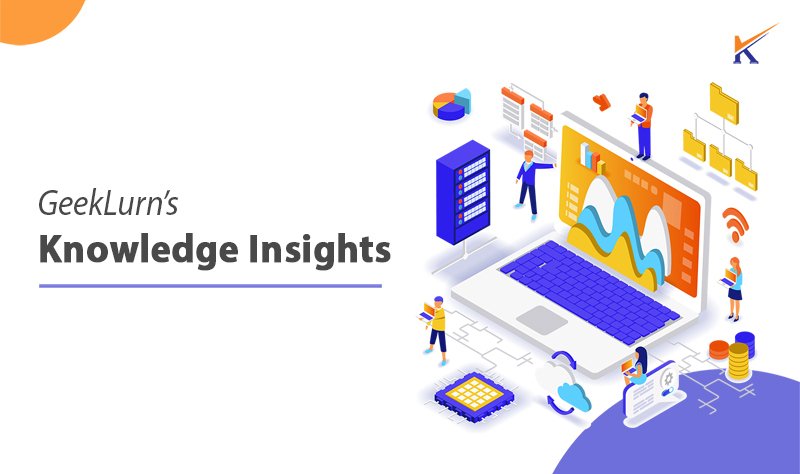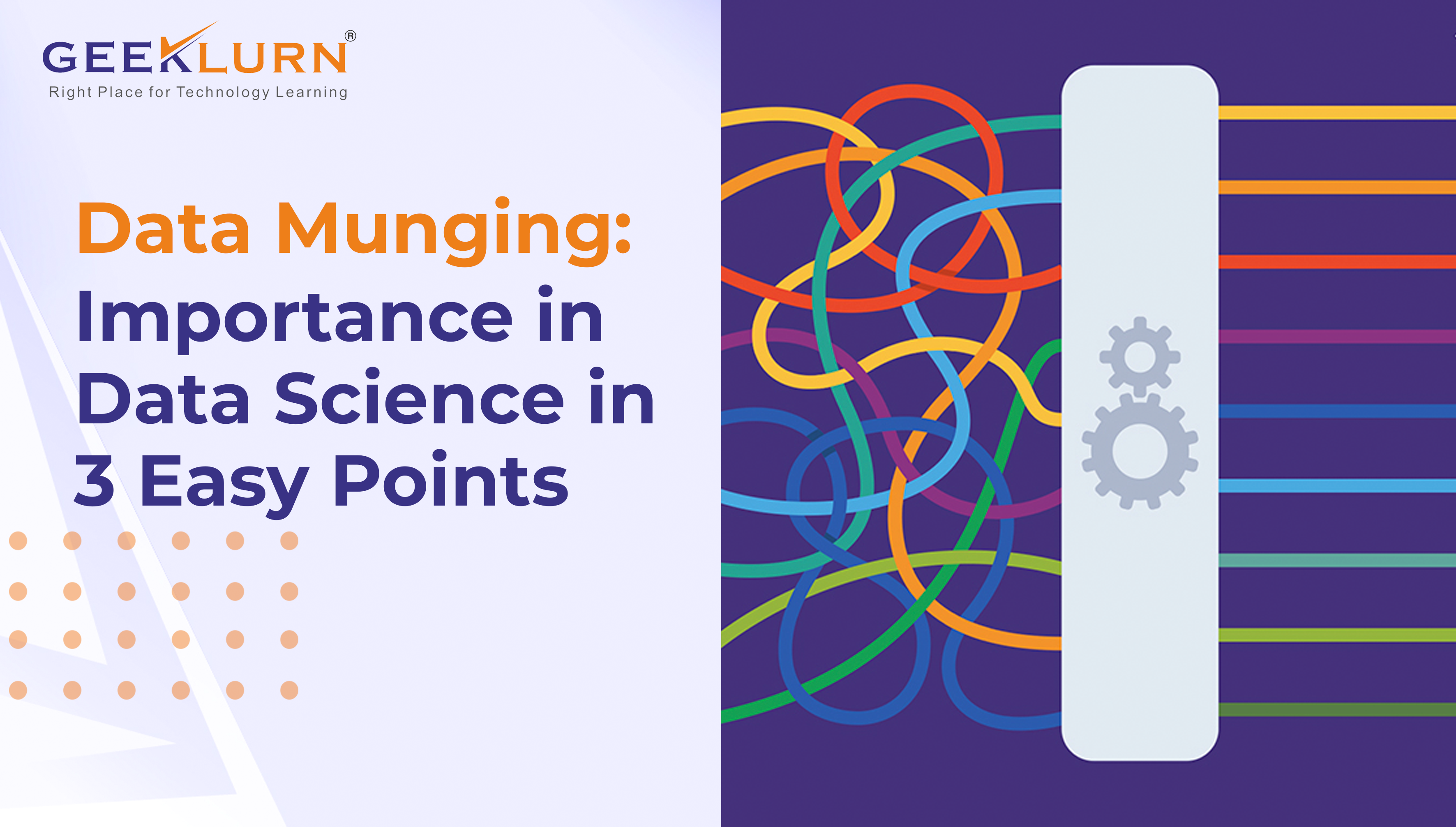Data science programming languages help interact with and send instructions to computers. Coding also plays a key role in cleaning, analysing, obtaining and visualising data. Codes can process a sea of data to ensure high productivity and performance. This is the most important skill to master for a career as a data scientist in India. An analysis of language tutorials by Popularity of Programming Language Index found that Python was the most popular in both India and the US, followed by Java and JavaScript. Languages like C/C++ and PHP have also piqued people’s interest and garnered support in India. Among the most promising of the upcoming languages are Dart, Go and Kotlin.
If you wish to learn the basics of these languages with an easy course and get ahead in your career, check out GeekLurn’s Data Science Architect Program. Being a member of NASSCOM and having partnered with IBM, GeekLurn has compiled a course that will give you extensive knowledge of programming languages and other relevant topics like EDA and Data Visualisation, Supervised Learning, Time Series Analysis, Dimensionality Reduction, Data Manipulation, Sequences and File Operations, Deep Dive – Functions, OOPs, Errors, Expectations and Modules and case studies. The course lasts for 24 months and has 100+ data science meetups, 6 months of live interactive classes and a chance to work with 50+ sponsored and funded research projects.
But before you enrol for a course, it’s a good idea to know what the top data programming languages are. So, let’s have a look at these.
Table of Contents
1. JavaScript
This is the most important language for data science with the capability to build rich and interactive webpages. It is easy to grasp for beginners and there are plenty of resources available to learn the language without hiccups. The language is lightweight, multiparadigm and versatile, which lets data scientists create dynamically updated content and animate images. It can support libraries for deep learning and machine learning. JavaScript can be the entry point for front-end and back-end programmers who wish to join the data science field.
2. R
Statistical computing and graphics are supported by R. They help in analysing and visualising data. Data scientists who learn it earn an average salary of more than ₹80 lakhs per annum. R is generated under General Public Licence (GNU) and there are minimal restrictions on its usage. A data scientist can develop webapps by building interactive dashboards. This can be done from the console of the R IDE. The main industries that need R are risk analytics, finance, banking and portfolio risk management.
3. Julia
It is one of the newest data science coding languages that are high-level and come with foreign function interfaces for Fortran, C++, Python, Java, R and C. It is typed dynamically and is listed as an open-source project with more than 1,000 contributors. The language makes it easy to express many object-oriented and functional programming patterns. The features are ideal for computational science and numerical analysis.
4. Python
This is an object-oriented, high-level, interpreted and open-source language. The main use of this language is to build software and websites, conduct data analysis and automate tasks. It consists of a whole ecosystem of libraries like NumPy, pandas, TensorFlow, Keras, Matplotlib and Scikit-learn. They help in data manipulations, processing and analysis. Other significant tasks are conducting data mining, possessing specific libraries for data preservation and carrying out ML or machine learning algorithms.
5. Scala
This is a Java extension and combines functional and object-oriented programming in a cohesive programming language required for data science. But it is said to be a less wordy alternative to Java that runs on the Java Virtual Machine for big data projects. The main function is strong static systems and functional programming without the concept of ‘primitive data’. It has a precise syntax, has some patterns built-in, is relatively easy to learn and is in high demand.
6. SQL
Structured Query Language (SQL) stores a big portion of the world’s data. It is one of the best languages for data science that lets programmers edit, extract and communicate data from databases. It can manage relational databases and perform multiple operations on data in them. The language is also a standard one for manipulating, storing and retrieving data. PL/SQL or procedural language for SQL is an extension of the Oracle database management system. It allows database users to read, delete, modify and store data in the system.
7. Go
It is a simple and reliable open-source programming language. Syntactically it is similar to C and layouts. Many developers believe that Go is just the 21st-century version of C and is perfect for all machine learning tasks. The main benefits are that it is easy to learn and has comprehensive tools for quick execution. Go also lets you replace a code cluster with a single code line.
8. MATLAB
This is short for ‘matrix laboratory’ and is the best programming language for data science for intense mathematical operations. It is broadly designed for numerical computing and is quite a handy tool for data scientists. It helps to perform visualisation in an interactive environment along with matrix manipulations, implementation of algorithms, user interface creation and plotting of data and functions. A few common math calculations where it is used are statistics, transforms, linear algebra and integrations.
9. Swift
It is one of the most powerful, smart and intuitive languages created for general purposes. Easy to read and maintain, Swift has a concise code structure and supports dynamic libraries. It is modern and human-friendly and can be used to develop cocoa touch, X-code and Swift playground. Studies show that it is 2.6 times faster than Objective C.
10. SAS
SAS is a company based out of Cary in NC. In data science, SAS offers a tool developed for complex statistical operations and advanced analytics. Other purposes are to report, retrieve and analyse statistical data. No wonder then that the Indian SAS market is estimated to grow 20 times to $50-$70 billion by 2030. A SAS programmer can easily switch to a data science career and create and embed analytically driven decision flows in real-time.
A Quick Comparison
| Programming Languages | Level of Difficulty | Data Science Tasks |
| JavaScript | Easy to learn and use | Perfect for data visualisationsSeveral native libraries to solve big data problems |
| R | Medium | Data visualisationStatistical problems through datasetsAnalyses massive data arrays |
| Julia | Easy to learn and implement | Risk analysisData analyticsHigh-speed maths problem solving |
| Python | Easy to learn and implement | Data miningMachine Learning (ML) algorithmsDesignated libraries for data preservation and pre-processing |
| Scala | Easy to learn | Deal with large volumes of dataParallel processes Perform single operations in different modes |
| SQL | Quite tedious to learn | Queries information stored in databasesManages large databasesRetrieves data from databases |
| Go | Easy to understand | Good for mission-critical data Flexible for use in machine learning |
| MATLAB | Simple to learn | Performing complex maths operationsGood for data analysis Works well with large volumes of data |
| Swift | Medium | Perfect for importing data science libraries from Python and C |
| SAS | Easy to use | Manage large volumes of dataStatistical models for data analysis |
| Platform | Share in Data Science Projects |
| Python | 66.00% |
| R | 47.00% |
| SQL | 33.00% |
| JavaScript | 6.80% |
| Scala | 3.50% |
| Julia | 1.70% |
If you have been wondering what language to choose for data science, consider learning at least these top ones. Having a clear idea can help you thrive in your data science career and stay relevant in any industry.






